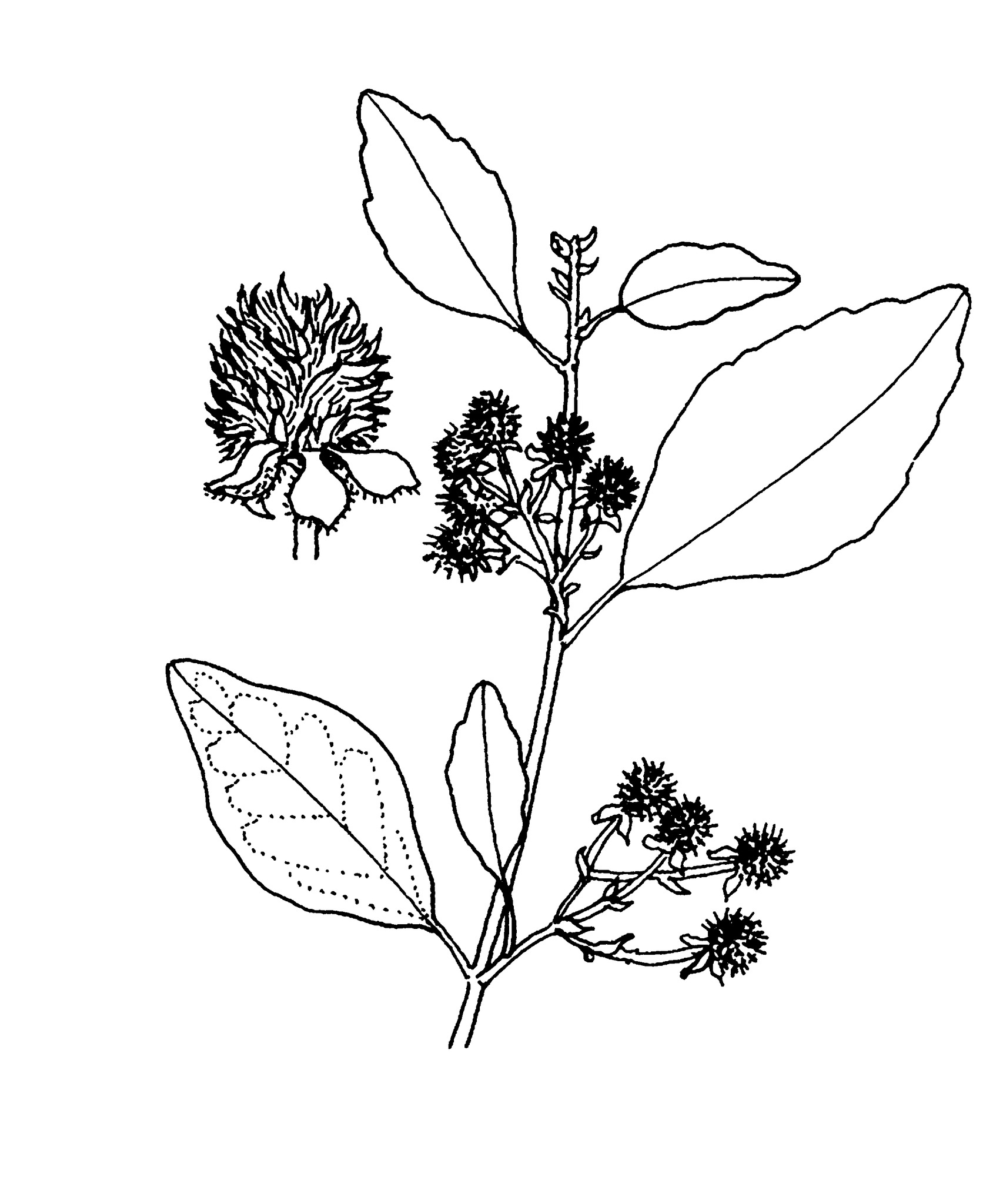
From the Greek dimorpho, alluding to a calyx of two forms.
Shrubs or trees, evergreen, perennial, male and female flowers on separate plants; stems and foliage without latex. Indumentum of simple, multicellular hairs, often attached at the middle. Stipules entire, inconspicuous, soon shed. Leaves alternate, stalked, unlobed, penninerved, without glands; margins denticulate to scalloped. Inflorescences axillary, paniculate, solitary, unisexual, with flowers in bracted clusters. Male flowers stalked; calyx lobes 5, overlapping, shortly fused; petals 5, overlapping, free; disk absent; stamens 8, filaments fused into a column, 2-rowed with 5 lower and 3 upper. Female flowers stalked; calyx lobes 5, overlapping, shortly fused; petals 5, overlapping, free; disk absent; ovary 1-3- chambered, ovules 1 per chamber; styles 3, shortly fused at base, divided into 2. Fruits capsular, dehiscent, 3-lobed, surface spiny. Seeds more or less roundish; ecarunculate.
Intolerant of frost.
About 15 species in Asia, Malesia and Australia (1 species). The native species is cultivated.
Seeds.
Stamens fused into 2-rowed column with 5 lower and 3 upper.
Airy Shaw (1980).
Source: (2002). Euphorbiaceae. In: . Horticultural Flora of South-eastern Australia. Volume 3. Flowering plants. Dicotyledons. Part 2. The identification of garden and cultivated plants. University of New South Wales Press.
